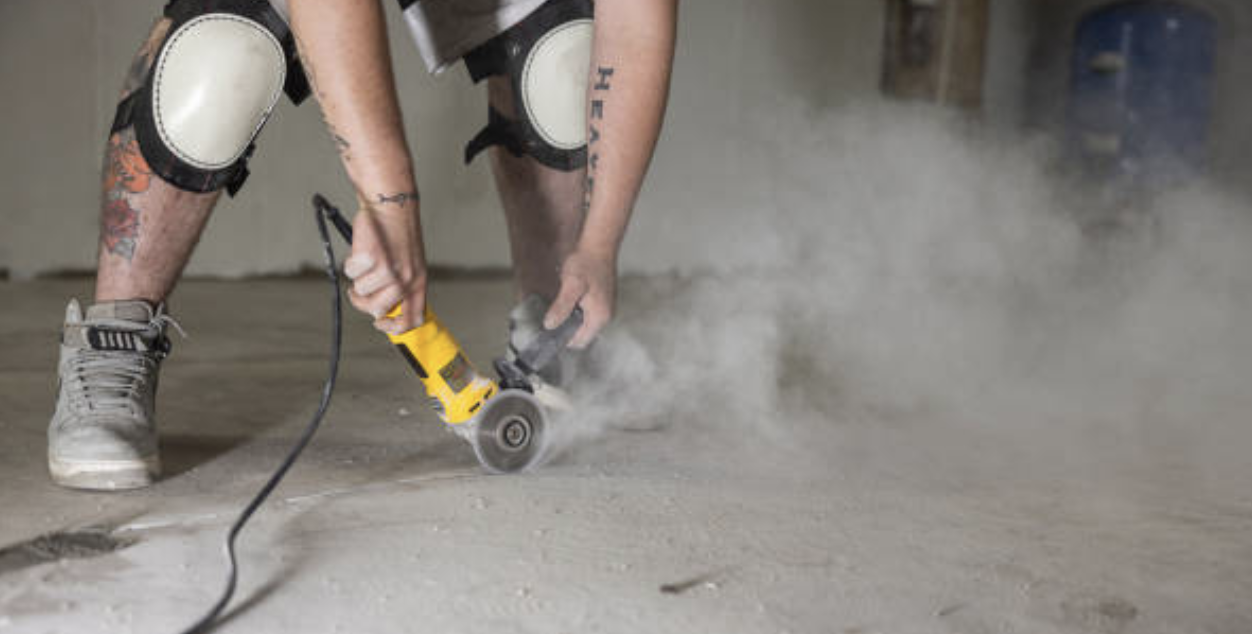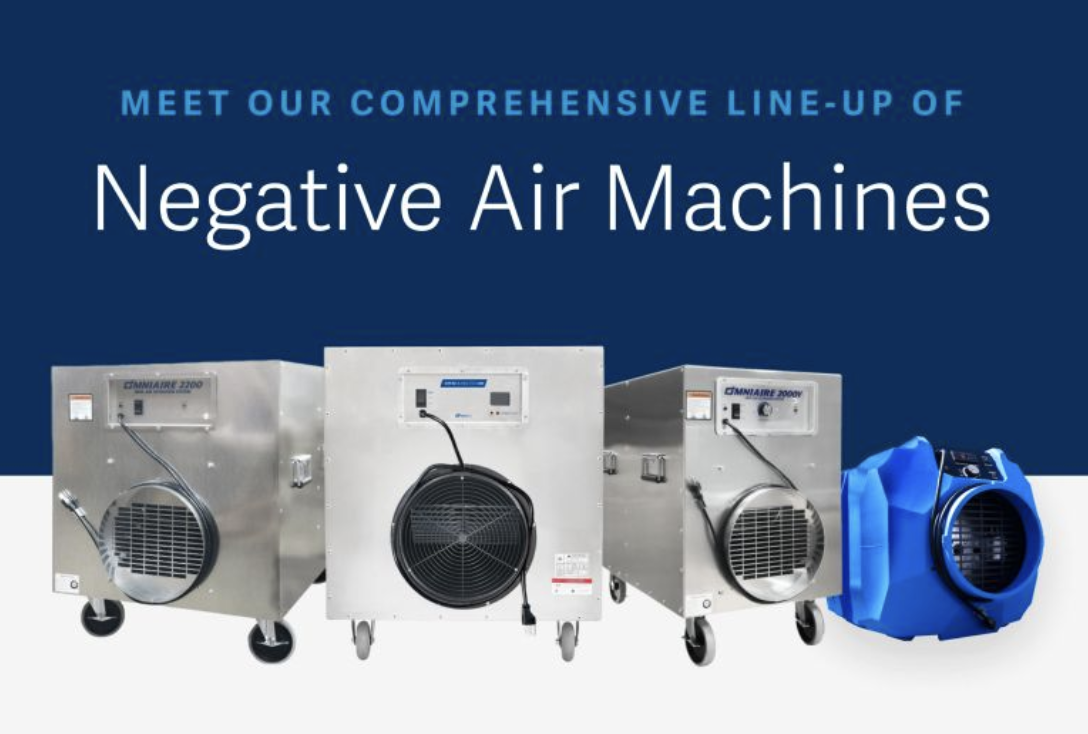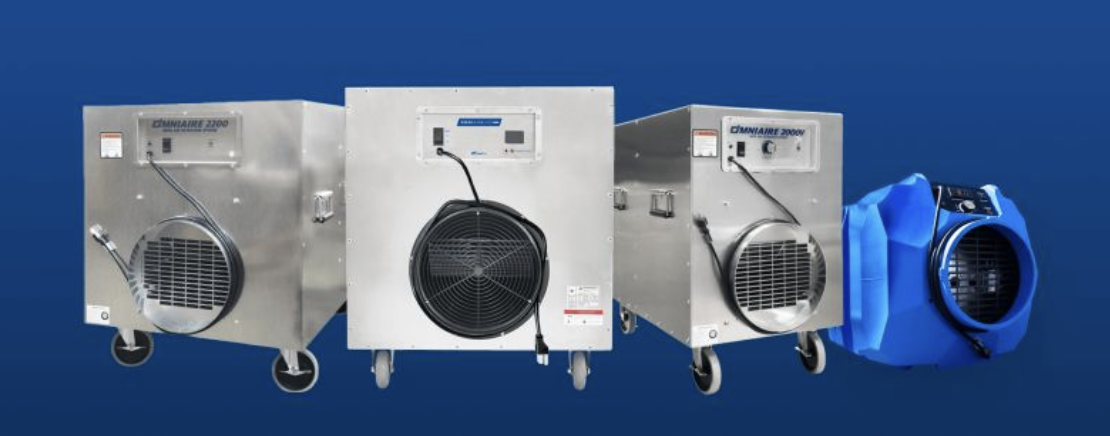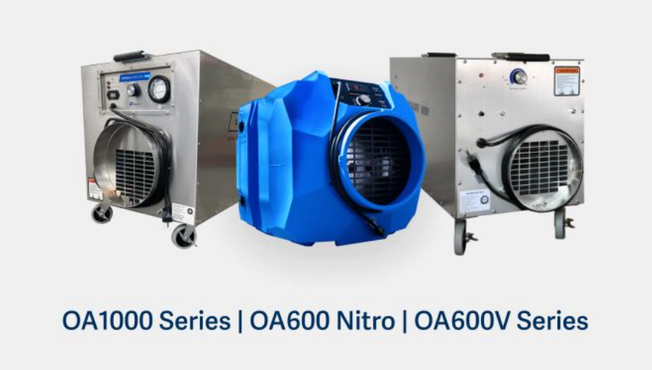Posted by Spycor LLC on Aug 1st 2025

If you're a contractor or homeowner embarking on a renovation project, you know that dust is the inevitable enemy. It settles on every surface, infiltrates HVAC systems, and can pose significant health risks. The question then becomes: "How do I control this?" The answer lies in a powerful piece of equipment often overlooked by those outside the industry—the negative air machine.
Understanding the Problem: Why Construction Dust Is More Than Just a Nuisance
Construction dust isn't your average household dust. It's a complex mix of fine particles from materials like drywall, concrete, wood, and silica. Inhaling these particles can lead to serious respiratory issues, including asthma, silicosis, and other long-term health problems. Beyond the health risks, dust can damage electronics, clog filters, and make the post-project cleanup a nightmare.
How Negative Air Machines Work: A Simple Solution to a Complex Problem
A negative air machine, often called a HEPA air scrubber, is a specialized air purification unit designed for environments with high levels of airborne contaminants. It doesn't just clean the air; it actively controls the airflow to prevent the spread of dust.

Here's a breakdown of how it works:
- Creating Negative Pressure: The machine is placed inside the work area and exhausts filtered air outside. This lowers the air pressure inside the containment zone relative to the surrounding areas, creating a "negative pressure."
- Pulling in Contaminated Air: Because air always moves from high pressure to low pressure, the negative pressure pulls in fresh, clean air from outside the work zone, ensuring that any dust generated is contained and doesn't escape.
- HEPA Filtration: The contaminated air is drawn into the machine and passed through a multi-stage filtration system, including a pre-filter and a powerful HEPA (High-Efficiency Particulate Air) filter. HEPA filters are capable of trapping 99.97% of airborne particles as small as 0.3 microns, including fine dust, mold spores, and allergens.
Benefits Beyond Dust Removal: Why You Need a Negative Air Machine
While dust removal is the primary function, these machines offer a range of additional benefits, making them an essential tool for any serious project:
- Mold Remediation: They are critical for mold removal projects, as they prevent mold spores from spreading to other areas of the building.
- Odor Control: The activated carbon filters often used with these machines can absorb and remove strong odors from paint, solvents, or smoke.
- Compliance & Safety: Using a negative air machine helps you comply with regulations from organizations like OSHA, which have strict guidelines for controlling airborne contaminants on job sites.
Choosing the Right Machine for Your Project
The type of negative air machine you need depends on the size of your project and the contaminants you're dealing with. For large-scale demolition, a powerful machine with a high CFM (Cubic Feet per Minute) rating is necessary. For a smaller renovation, a more compact unit may suffice.
-
Spycor's NCF series offers a range of options for every need, from the NCF600 for smaller jobs to the NCF2000 for large-scale projects and demolition. Our machines are designed with HEPA filtration to provide maximum dust and particulate removal.
Ready to Invest in Cleaner Air?
Negative air machines are a proven solution for dust control in construction and renovation. By removing dust efficiently, they create safer, cleaner, and more professional worksites.
Ready to elevate your project? Explore our range of negative air machines at Spycor.com and find the perfect fit for your needs. Shop Here to boost safety, compliance, and client satisfaction!

FAQ: Your Questions Answered
Can I just use a regular fan to remove dust?
No. A regular fan will simply blow dust around, spreading it to other areas of the home or job site. A negative air machine is specifically designed to contain and filter the air, preventing cross-contamination.
How often should I change the filters?
This depends on the level of contamination. The pre-filter should be changed regularly (sometimes daily on very dusty jobs) to extend the life of the more expensive HEPA filter. The HEPA filter itself can last for months or even years, but should be replaced when the machine's pressure gauge indicates it's full.
Is a negative air machine the same as an air scrubber?
The terms are often used interchangeably. However, a negative air machine's key function is creating negative pressure, while an air scrubber's primary purpose is to filter and clean the air without necessarily creating a pressure differential. Many of Spycor's machines, like the NCF series, perform both functions.


